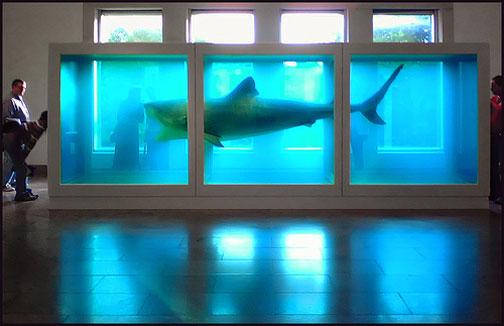Faith+Art

Hello biscuit bloggers, first off let me introduce myself.
I’m Andy Barker, an intern here at the Holy biscuit, a Fine Art Graduate, photographer, music lover and someone who believes that art and God, or to put it another way, art and faith, can work together to form something beautiful. Not only that they can, but that they should work together, in conversation, but it seems to me that all too often Christians don’t like to engage with art, but why?
Well, “Faith” and, to a slightly lesser degree, “art” are words that bring to mind dusty rooms full of mystical things. With faith we think of monks reverently going about their holy duties, or if new-atheism’s definition is more your thing then we imagine someone choosing to close their metaphorical eyes and ears to logic and leaping forth into fairy tales and ancient myths, but faith is far more relevant than you might think.
At its most basic, faith is simply believing in something, whether that be a deity who we entrust with all aspects of our life or the chair I trust to hold my weight. Both are acts of faith based on a belief we hold in the object of that belief. We all exhibit faith to some degree.
Now art is a muddled subject at the best of times and as soon as you prefix it with “modern” “postmodern” or “contemporary” then God help us if we want to understand what it’s going on about… right?
Art, as seen in the Tate modern and Turner prize lists, may appear to be non-beautiful, elitist and confusing but art, like faith, points to something other than itself. If, for instance, the object of one’s faith is God, so, in much of today’s art, the object of one’s art is an idea or concept. Both Art and Faith direct our attention to something beyond themselves.
Let’s take an example we might recognise; Damien Hirst’s “The physical impossibility of death in the mind of someone living” aka his Tiger Shark in formaldehyde is a piece of art which conveys a concept. Hirst aimed to use the preserved shark as a way of forcing us to consider our own mortality. A shark, one specifically chosen because it is capable of eating a human, is suspended in a life like state in a way that allows the viewer freedom to observe it, all the while knowing that were we this close in the shark’s natural habitat things wouldn’t end well for us. This is art as a vehicle for a concept, regardless of your view of this work’s merit or its effectiveness at communicating its chosen concept, we can begin to see how faith and art are not worlds apart; they both draw our gaze past themselves and onto their chosen object.
Art has always dealt with concepts, some big, some small, some commissioned by monarchs and some dreamt up by surrealist revolutionaries. But a concept without a vehicle for engaging with it is nothing more than a thought, and the same applies for faith without an object.
I guess what I want to ask is: If art is accustomed to dealing with concepts, why, when it comes to concepts of faith and belief, are they often presented by those who believe them, in thinly veiled and shallow ways? Mr Hirst may have posed the question of death and mortality to his audience with his suspended Shark but he didn’t offer any answers. He simply (and effectively) asked big questions. So where are the debaters, the philosophers, the thinkers and the believers who could rouse our thoughts and feelings by posing their own ideas, their concepts, their questions and their faith in equally engaging and compelling ways?
But we cannot (and shouldn’t) all be Damien Hirsts; even Damien Hirst is no longer the same man who pickled a shark and a few farm yard animals. We need artists, art lovers and creative folk who ask the questions that matter to them, hold out the answers they think fit and do all this in a way that reflects who they are, that fits their ideas and that fits, or fights, their culture.